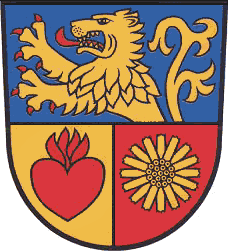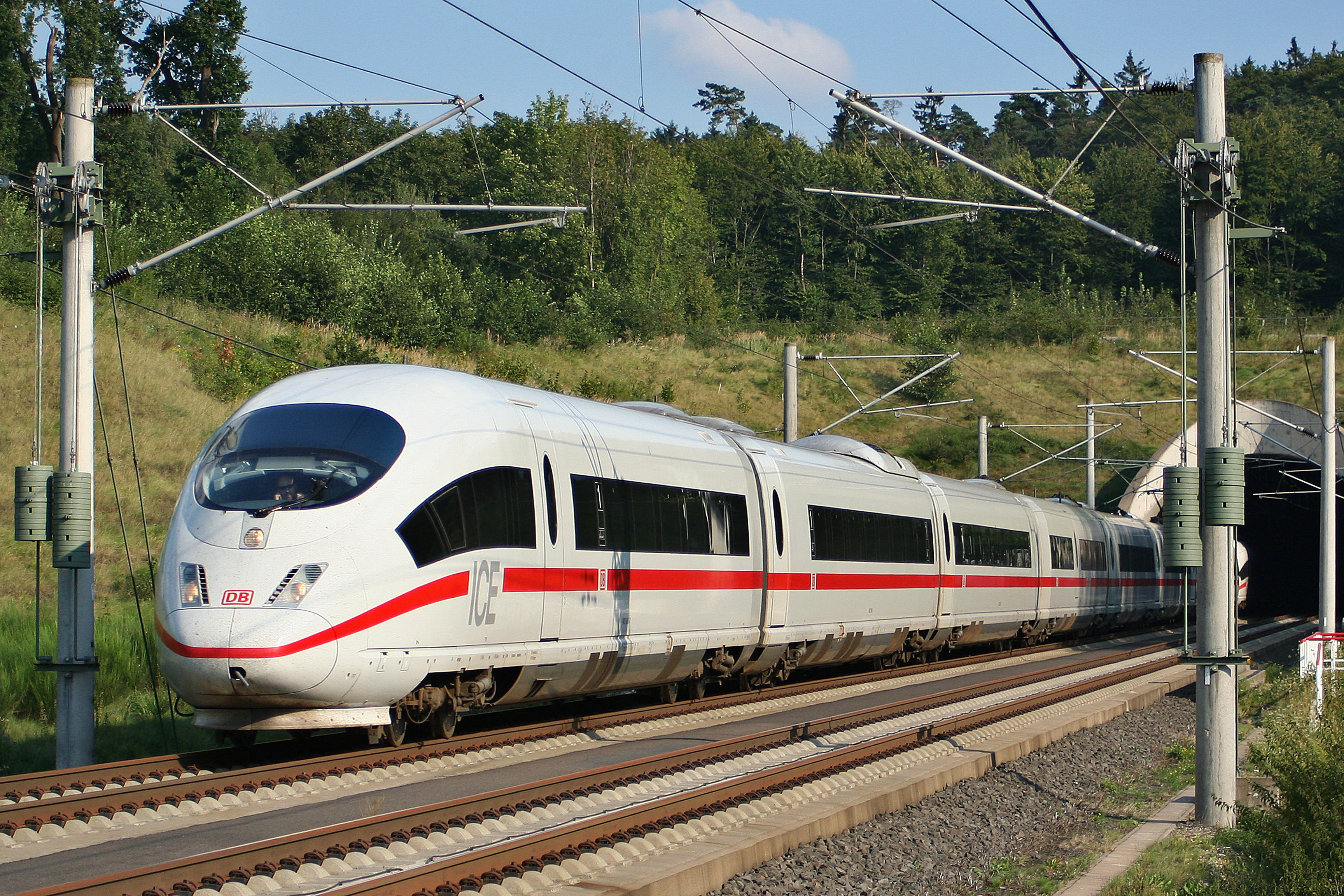|
Lichtenhain Bergbahn
Lichtenhain/Bergbahn is a former municipality in the district Saalfeld-Rudolstadt, in Thuringia, Germany. Since 1 December 2008, it is part of Oberweißbach. History Lichtenhain/Bergbahn was first mentioned in 1455 and is located on the ancient trade route from Erfurt to Nuremberg. It once belonged to the sovereignty of Schwarzburg-Rudolstadt, later to the Principality of Schwarzburg-Rudolstadt. In the Thirty Years' War the town was completely devastated. The main source of income of the residents was originally forestry, Charcoal burner, charcoal burning and resin extraction. Later the trading of nature medicines ("''Olitäten''") became a major economic driver. In 1812 Lichtenhain/Bergbahn counted 375 inhabitants which rose to 524 in 1902. In 1923, the Oberweißbacher mountain railway opened which connected Lichtenhain with national railway network. Major industries in modern times were the glass industry and the thermometer production, after the Second World War, increasingly ... [...More Info...] [...Related Items...] OR: [Wikipedia] [Google] [Baidu] |
Saalfeld-Rudolstadt
Saalfeld-Rudolstadt is a ''Kreis'' (district) in the south of Thuringia, Germany. Neighboring districts are (from the north clockwise) the districts Weimarer Land, Saale-Holzland, Saale-Orla, the district Kronach in Bavaria, and the districts Sonneberg, Hildburghausen and Ilm-Kreis. History The district dates back to the ''Landratsamt'' Saalfeld, which was created in 1868, and in 1922 it was converted into the ''Landkreis''. Also in 1922 the district Rudolstadt was created, the second historical root of the district as of today. Both districts were merged in the communal reform of 1994. Geography The main river in the district is the Saale. The highest elevation is 827 m above sea level near Piesau, and the lowest, at 169 m, is in the Saale river valley near Niederkrossen. Coat of arms As Saalfeld was the capital of the Duchy of Saxe-Coburg-Saalfeld, the Saxon coat of arms is displayed in the top-right and bottom-left quarter of the coat of arms. The other two quarters show the ... [...More Info...] [...Related Items...] OR: [Wikipedia] [Google] [Baidu] |
Social Democratic Party Of Germany
The Social Democratic Party of Germany ( , SPD ) is a social democratic political party in Germany. It is one of the major parties of contemporary Germany. Saskia Esken has been the party's leader since the 2019 leadership election together with Lars Klingbeil, who joined her in December 2021. After losing the 2025 federal election, the party is part of the Merz government as the junior coalition partner. The SPD is a member of 12 of the 16 German state governments and is a leading partner in seven of them. The SPD was founded in 1875 from a merger of smaller socialist parties, and grew rapidly after the lifting of Germany's repressive Anti-Socialist Laws in 1890 to become the largest socialist party in Western Europe until 1933. In 1891, it adopted its Marxist-influenced Erfurt Program, though in practice it was moderate and focused on building working-class organizations. In the 1912 federal election, the SPD won 34.8 percent of votes and became the largest party in t ... [...More Info...] [...Related Items...] OR: [Wikipedia] [Google] [Baidu] |
Gerhard Botz
Gerhard Botz (born 15 September 1955 in Rudolstadt, Bezirk Gera) is a German politician and member of the SPD The Social Democratic Party of Germany ( , SPD ) is a social democratic political party in Germany. It is one of the major parties of contemporary Germany. Saskia Esken has been the party's leader since the 2019 leadership election together wi .... External links * Biography by German Bundestag 1955 births Living people People from Rudolstadt People from Bezirk Gera Members of the 10th Volkskammer Members of the Bundestag for Thuringia Members of the Landtag of Thuringia University of Rostock alumni Members of the Bundestag 2005–2009 Members of the Bundestag for the Social Democratic Party of Germany {{Germany-SPD-politician-stub ... [...More Info...] [...Related Items...] OR: [Wikipedia] [Google] [Baidu] |
Deutsche Bahn AG
(, ; abbreviated as DB or DB AG ) is the national railway company of Germany, and a state-owned enterprise under the control of the German government. Headquartered in the Bahntower in Berlin, it is a joint-stock company ( AG). DB was founded after the merger between Deutsche Bundesbahn and the East German Deutsche Reichsbahn in 1994 after the unification of Germany and has been operating ever since. is the second-largest transport company in Germany, after the German postal and logistics company / DHL. DB provides both long-distance and regional transport, serving around 132 million long distance passengers and 1.6 billion regional passengers in 2022. In 2022, DB transported 222 million tons of cargo. Company profile The group is divided into several companies, including '' DB Fernverkehr'' (long-distance passenger), '' DB Regio'' (local passenger services) and '' DB Cargo'' (rail freight). The Group subsidiary '' DB InfraGO'' also operates large parts of the German ... [...More Info...] [...Related Items...] OR: [Wikipedia] [Google] [Baidu] |
Adhesion Railway
An adhesion railway relies on adhesion traction to move the train, and is the most widespread and common type of railway in the world. Adhesion traction is the friction between the drive wheels and the steel rail. Since the vast majority of railways are adhesion railways, the term ''adhesion railway'' is used only when it is necessary to distinguish adhesion railways from railways moved by other means, such as by a stationary engine pulling on a funicular, cable attached to the cars or by a pinion meshing with a rack railway, rack. The friction between the wheels and rails occurs in the wheel–rail interface or contact patch. The traction force, the braking forces and the centering forces all contribute to stable running. However, running friction increases costs, due to higher fuel consumption and increased maintenance needed to address fatigue (material), fatigue damage and wear on rail heads and on the wheel rims and rail movement from traction and braking forces. Variation ... [...More Info...] [...Related Items...] OR: [Wikipedia] [Google] [Baidu] |
Cursdorf
Cursdorf is a municipality in the district Saalfeld-Rudolstadt, in Thuringia, Germany Germany, officially the Federal Republic of Germany, is a country in Central Europe. It lies between the Baltic Sea and the North Sea to the north and the Alps to the south. Its sixteen States of Germany, constituent states have a total popu .... References Municipalities in Thuringia Saalfeld-Rudolstadt {{SaalfeldRudolstadt-geo-stub ... [...More Info...] [...Related Items...] OR: [Wikipedia] [Google] [Baidu] |
Mellenbach-Glasbach
Mellenbach-Glasbach is a village and a former municipality in the district Saalfeld-Rudolstadt, in Thuringia, Germany. Since 1 January 2019, it is part of the town Schwarzatal Schwarzatal is a town and a municipality in the district Saalfeld-Rudolstadt, in Thuringia, Germany Germany, officially the Federal Republic of Germany, is a country in Central Europe. It lies between the Baltic Sea and the North Sea to th .... References Former municipalities in Thuringia Saalfeld-Rudolstadt Villages in Thuringia {{SaalfeldRudolstadt-geo-stub ... [...More Info...] [...Related Items...] OR: [Wikipedia] [Google] [Baidu] |
Oberweißbacher Bergbahn
The Oberweißbacher Bergbahn (, ) is a German railway in the Thuringian Highland, Thuringia. Since 1922 it connects Obstfelderschmiede (Mellenbach-Glasbach) with the village Lichtenhain, Oberweißbach and Cursdorf. The train consists of 1.351 km broad gauge cable railway and connects to a 2.635 km standard gauge electrified adhesion railway. History Both railways are operationally closely linked. Since January 1982 the Oberweissbacher-Bergbahn is a historical monument. The railway is operated by Deutsche Bahn AG and offers a half-hourly service from 5:30 am to 8:00 pm. with capacity for about 30 passengers. Operation This funicular is unusual because instead of using two purpose-built passenger vehicles, it only features one. The other vehicle is a flat wagon Flat wagons (sometimes flat beds, flats or rail flats, US: flatcars), as classified by the International Union of Railways (UIC), are railway goods wagons that have a flat, usually full-length, deck (or 2 d ... [...More Info...] [...Related Items...] OR: [Wikipedia] [Google] [Baidu] |
Arnica Montana
''Arnica montana'', also known as wolf's bane, leopard's bane, mountain tobacco and mountain arnica, is a moderately toxic European flowering plant in the daisy family Asteraceae that has a large yellow head (botany), flower head. The names "wolf's bane" and "leopard's bane" are also used for another plant, ''Aconitum'', which is extremely poisonous. ''Arnica montana'' has been used as a herbal medicine, but there is insufficient evidence-based medicine, clinical evidence for its therapeutic use, and it is toxic when taken internally or applied to injured skin. Description ''Arnica montana'' is a flowering plant about tall Aromatic plant, aromatic fragrant, herbaceous Perennial plant, perennial. Its basal green Glossary of leaf morphology#Leaf and leaflet shapes, ovate leaves with rounded tips are bright coloured and level to the ground. In addition, they are somewhat downy on their upper surface, veined and aggregated in Rosette (botany), rosettes. By contrast, the upper leav ... [...More Info...] [...Related Items...] OR: [Wikipedia] [Google] [Baidu] |
Wappen Lichtenhain-Bergbahn
A coat of arms is a heraldic visual design on an escutcheon (i.e., shield), surcoat, or tabard (the last two being outer garments), originating in Europe. The coat of arms on an escutcheon forms the central element of the full heraldic achievement, which in its whole consists of a shield, supporters, a crest, and a motto. A coat of arms is traditionally unique to the armiger (e.g. an individual person, family, state, organization, school or corporation). The term "coat of arms" itself, describing in modern times just the heraldic design, originates from the description of the entire medieval chainmail "surcoat" garment used in combat or preparation for the latter. Rolls of arms are collections of many coats of arms, and since the early Modern Age centuries, they have been a source of information for public showing and tracing the membership of a noble family, and therefore its genealogy across time. History Heraldic designs came into general use among European nobility in ... [...More Info...] [...Related Items...] OR: [Wikipedia] [Google] [Baidu] |
Statistisches Bundesamt
The Federal Statistical Office (, shortened ''Destatis'') is a federal authority of Germany. It reports to the Federal Ministry of the Interior. The Office is responsible for collecting, processing, presenting and analysing statistical information concerning the topics economy, society and environment. The purpose is providing objective, independent and highly qualitative statistical information for the whole public. About 2300 staff members are employed in the departments in Wiesbaden, Bonn and Berlin. The department in Wiesbaden is the main office and runs the largest library specialised in statistical literature in Germany. It is also the Office of the President who is also by tradition, but not by virtue of the office, the Federal Returning Officer. In this position, they are the supervisor of the elections of the German Parliament ("Bundestag") and of the European Parliament. The Berlin Information Point is the service centre of the Federal Office in the German capital and ... [...More Info...] [...Related Items...] OR: [Wikipedia] [Google] [Baidu] |





